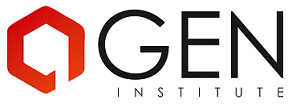Money and budgeting
Australian currency
Australian currency is in dollars and cents. We use $ and ¢ symbols.
In text, we identify Australian dollars with AUD.
Australian coins
Australian coins are 5 cents, 10 cents, 20 cents, 50 cents, one dollar and two dollars.
The $1 and $2 coins are gold coloured. The $2 coin is smaller than the $1 coin.
Australian banknotes
Australian banknotes are available in $5, $10, $20, $50 and $100.
Our banknotes are coloured and have special security features. Find out more on the Australia’s banknotes page on the Reserve Bank of Australia website.
Rounding up and down
When shopping, prices are rounded up or down to the nearest five cents.
If an item is priced at $1.99 or $1.98 you pay $2.
If an item is priced at $1.97 or $1.96 you pay $1.95.
Currency exchange
The Reserve Bank of Australia lists exchange rates on the Exchange rates page on their website.
Exchange services are located at Melbourne Airport, in Melbourne’s central business district (CBD) and most banks. Note: You will need to pay a fee for all foreign currency exchanges.
Banking in Victoria
Banks and credit unions
There are four major banks in Australia and a number of credit unions. The major banks are:
Commonwealth Bank
National Australia Bank (NAB)
ANZ
Westpac
ID requirements to open an account
Check with the bank you want to open an account with. Generally, you must have your letter of offer or Electronic Confirmation of Enrolment (eCoE) from the university, college or school you are enrolled in, as well as your passport, and other forms of identification. You will also need your Australian Tax File Number (TFN).
Opening hours
Most banks are open Monday to Friday from 9.30 am to 4.00 pm. Some are also open later on Friday afternoons and on Saturday mornings.
Automatic Teller Machines
Automatic Teller Machines (ATMs) are available all day, every day. Many universities, colleges and schools have ATMs on campus.
If you use an ATM for a bank that’s not your own, you may be charged a fee. The ATM displays a message to tell you that a fee will be charged for continuing the transaction, and you can choose to continue or to cancel your transaction.
If you use an ATM from the same bank as the card you are using, you won’t be charged a fee.
For many international students, arriving in Australia marks the first time they’ve ever lived away from their parents. It can also be the first time that they are responsible for things like paying for rent, electricity and food.
This kind of responsibility can end up being almost as stressful as your studies. It’s only when you’re out in the world on your own that you realise how many things you have to pay for, and how expensive those little conveniences you take for granted can be. But with a little bit of planning and research, and a lot of self-discipline, you can keep things from getting out of control.
Although international student visa holders are permitted to work up to 20 hours a week during study periods, don’t rely on your wages from part-time work to live on. It can be very difficult to find part-time work—and even more difficult to find well-paid part-time work. You should treat any income you earn while you’re in Australia as a bonus, not a necessity.
Research before you arrive put yourself on a budget
The best way to avoid falling into financial stress is to come up with—and stick to—a basic budget. Here are some tips to help you manage your bank balance:
- Identify those things that you have to pay for every week or month (like rent, phone bills, gym membership) and see if you can set up an automatic payment from your bank account on the due date. In Australia this is called direct debit, and because it’s automatic you don’t have to worry about getting in trouble for making late payments or standing in line for an hour to make the payment in person.
- If you don’t set up direct debits, make sure you pay your rent and utilities on time. Late payments often attract additional charges in your next statement.
- Try to give yourself a budget to ‘live on’ each week, and stick to it. For example, withdraw $120 at the beginning of the week to cover all your food, transport and entertainment expenses.
- Be aware of how much money you have in your account at all times.
- Don’t use a credit card. They’re usually more trouble than they’re worth. If you absolutely must have one, shop around for the best card for you (interest rates can vary from as low as 5.99% to as high as 24.99%) and try to use it only in emergencies. These emergencies don’t include new shoes you don’t need, concert tickets or a top-of- the-line mobile phone.
- If you buy things online, use a debit card (which is like a credit card, only using money you already have) or BPay (paying through your savings account). It offers you more protection online, and you won’t have to pay interest on the purchase like you would using a credit card.
- Minimise the fees your bank charges by only using one of their ATMs, minimising the amount of withdrawals you make and your use of EFTPOS.
- Live economically. The choices you make can make a big difference to your weekly budget and overall costs of living. For example, you can pick up second-hand furniture and clothes in good condition at places like the Salvation Army or weekend markets.
- Look in free street press magazines (you can pick them up in places like music stores, cinemas and student refectories) for details of upcoming cheap or free activities, like concerts, art exhibitions, markets, sporting activities and festivals.


